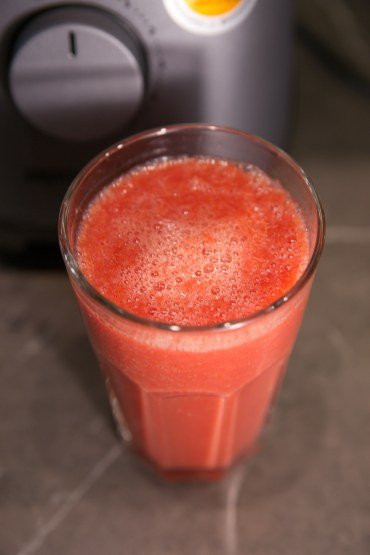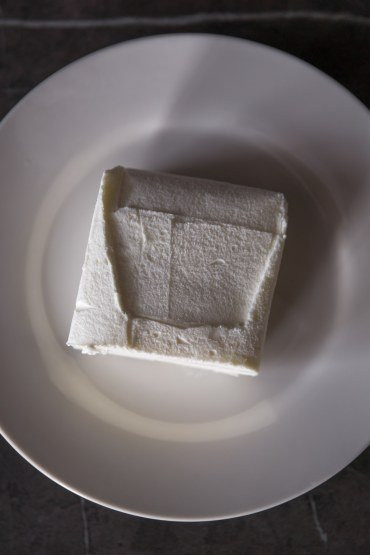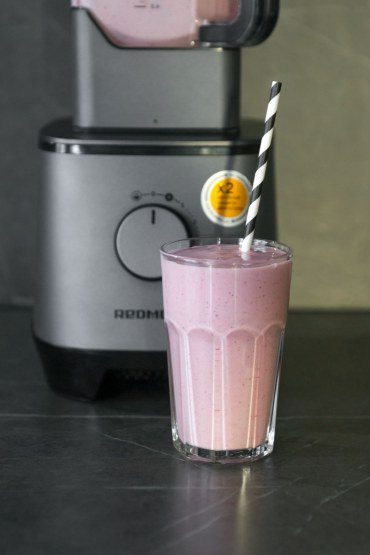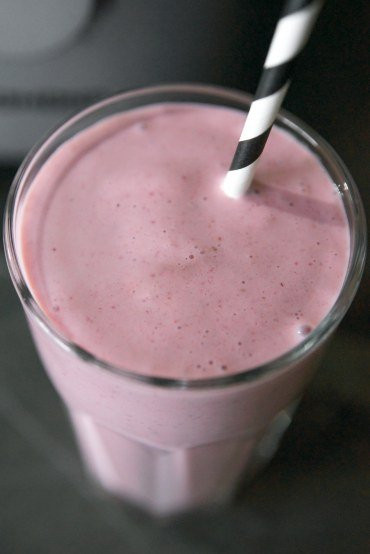We continue to explore the Redmond range of stationary blenders, and today we have the BS415 model. This blender features a large capacity jar and offers stepless speed control, as well as several useful modes, including making creamy soups, crushing ice, and serving as a mini chopper for coffee, nuts, and spices. Our task is to check how well these functions correspond to the declared characteristics and what the results of its operation will be.
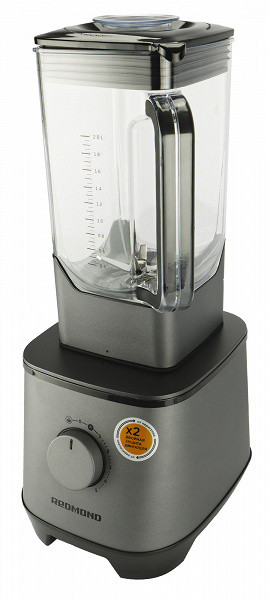
Characteristics
| Manufacturer | Redmond |
|---|---|
| Model | BS415 |
| Type | blender |
| Country of Origin | China |
| Guarantee | 12 months |
| Estimated service life* | 3 years |
| Declared power | rated power — 2000 W, maximum — 3000 W |
| Housing material | plastic |
| Case color | graphite, black |
| Control type | mechanical, touch |
| Number of speeds | 5 + pulse mode |
| Speed in main mode | 5000—32000 rpm |
| Engine overheat protection | There is |
| Lockout due to incorrect assembly | There is |
| Knife shape | 6-petal |
| Automatic modes | basic, crushing ice, grinding coffee beans |
| Self-cleaning function | There is |
| Jug material | plastic (Tritan BPA) |
| Jug volume | 2 l |
| Coffee grinder volume | 400 ml |
| Cord length | 1.2 m |
| Dimensions (W×H×D) | 205×480×235 mm |
| Net weight | 5.8 kg |
* Contrary to popular belief, this is not the time limit after which the device will necessarily break down. However, after this period, the manufacturer ceases to bear any responsibility for its performance and has the right to refuse to repair it, even for a fee.
Equipment
The Redmond BS415 blender comes in an elegant large box that matches the brand's corporate identity. On a matte graphite background with a glossy lamination, large images of the blender are highlighted, as well as pictograms describing its key characteristics. Next to the photographs there is information about the manufacturer and basic technical data.

Inside, the fully assembled device was wrapped in polyethylene and tightly clamped with foam inserts.
The Redmond BS415 kit consists of:
- base (electric motor block)
- jug with knife block
- lids with a hole for feeding products
- cap with measuring scale
- pusher
- coffee grinder
- two spare couplings per drive shaft
- recipe books
- instructions and warranty card
At first sight
The massive Redmond BS415 blender looks impressive and solid. The body of the base and the base of the two-liter jug are made of matte graphite plastic, and black inserts with a glossy finish give it a strict and modern look.
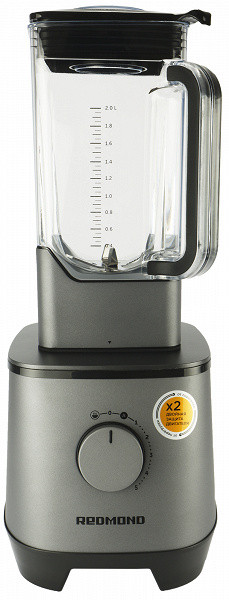
The Redmond BS415 blender weighs about 6 kg and has a height of about 48 cm. It is very stable on the kitchen table thanks to four large legs with grooved rubber pads. At the bottom of the device there are ventilation slots and a sticker with a barcode and technical information. The 1.2 meter long power cord comes out from the bottom of the back of the base.
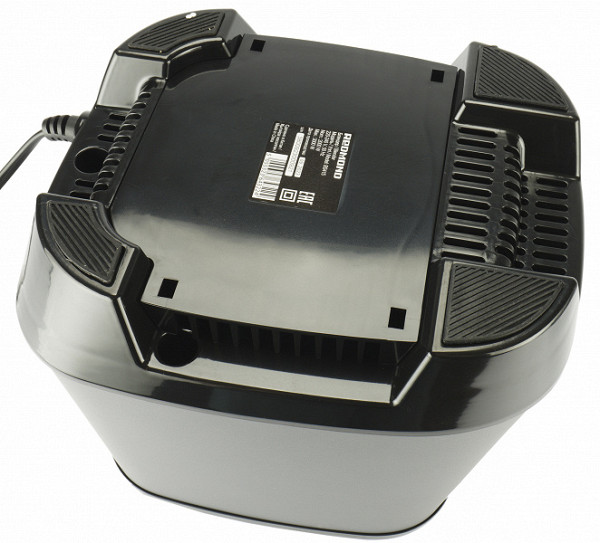
The control panel in the form of a round speed controller is located in the center of the front part. The sticker to the right of the handle is easy to remove and leaves no traces of glue.
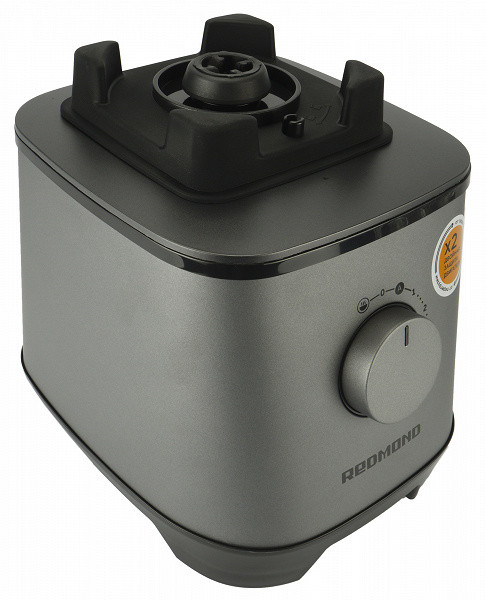
The platform for installing the jug is equipped with a removable vibration-resistant rubber pad with four protrusions and a safety shutdown button. This element prevents the motor from starting if the jug is not installed on the base. The direction you insert the jug doesn't matter, as long as it locks into place. The connection is made of metal to metal, additionally provided with a rubber coupling to reduce vibration during operation.
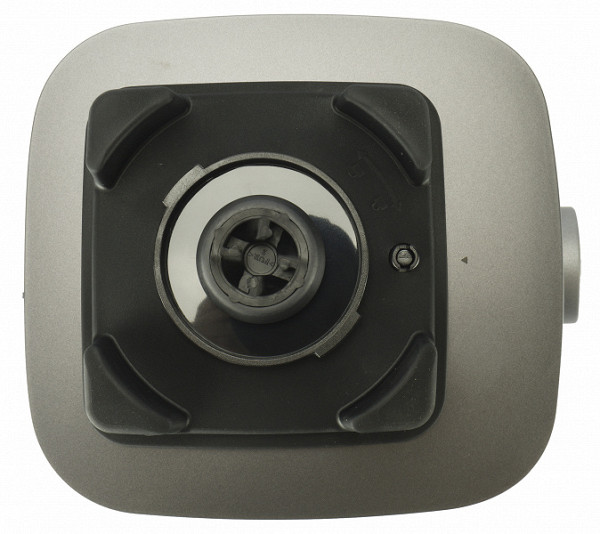
The kit includes two spare couplings.
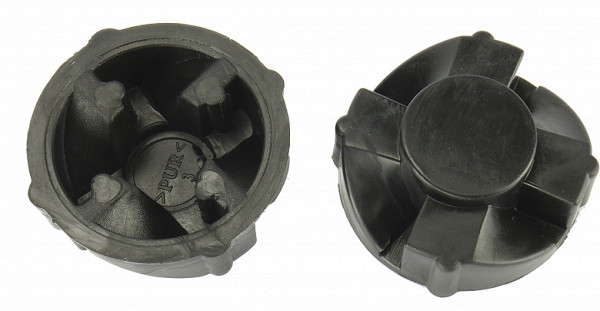
The jug is made of clear plastic (Tritan BPA), rectangular in shape with rounded corners, has thick walls and looks solid.
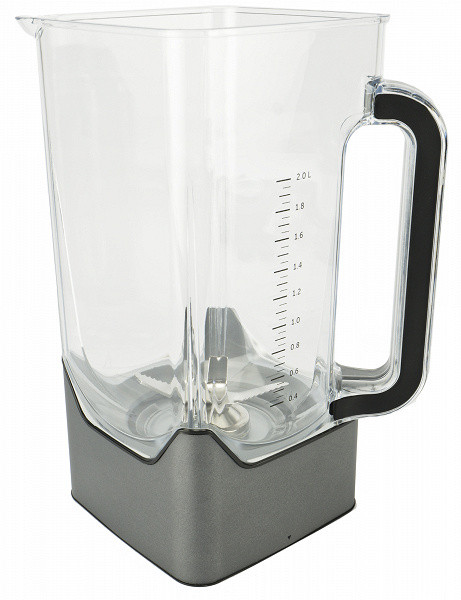

The non-removable stainless steel knife block consists of six blades arranged on three levels. The first two blades are parallel to the bottom, the next ones are slightly curved upward, and the remaining two are almost perpendicular to the base. The first two pairs of blades have serrations.

On one side there are marks from 0.4 to 2 liters at intervals of 50 ml. The handle of the jug is large and comfortable, with rubber side inserts. The jug has a spout. When the lid of the glass is tightly closed, nothing will spill through the hole in the spout.

The lid is made of glossy black plastic with a rubber seal that ensures a tight seal in the jug. Removing it requires significant effort. There is a hole in the center of the lid for pushing or adding ingredients while working. It is closed with a measuring cap. The transparent part with the 35, 50 and 65 ml marks is attached to the lid by turning it clockwise.

The standard plastic pusher is equipped with a limiter.
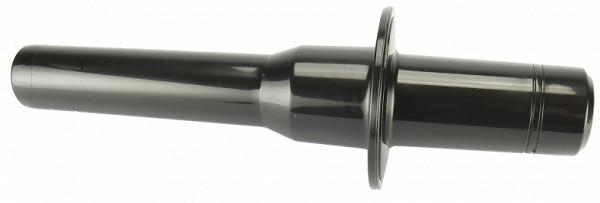
An additional attachment in the form of a coffee grinder is a metal bowl on a plastic base with a knife block of two blades.

The bowl is closed with a plastic lid with a rubber seal and secured by turning it clockwise. Coffee grinder capacity — 400 ml.
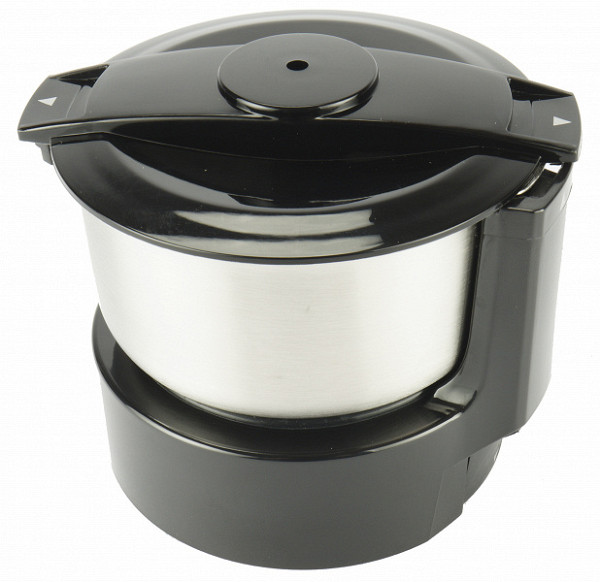
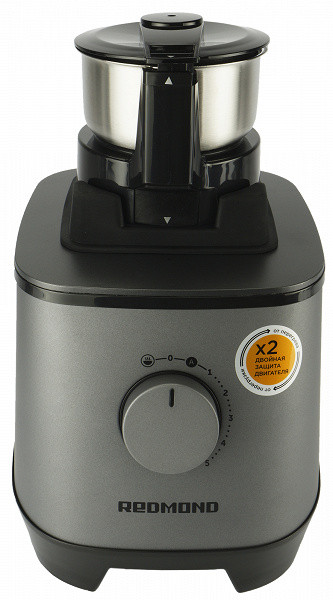
Instructions
The instruction manual is presented in the form of a compact brochure, printed on high-quality glossy paper. The instruction pages contain all the necessary information about the blender: a description of its design, control procedures, recommendations for the safe operation of the device and tips for caring for it. The text is structured logically and presented in simple and understandable language.
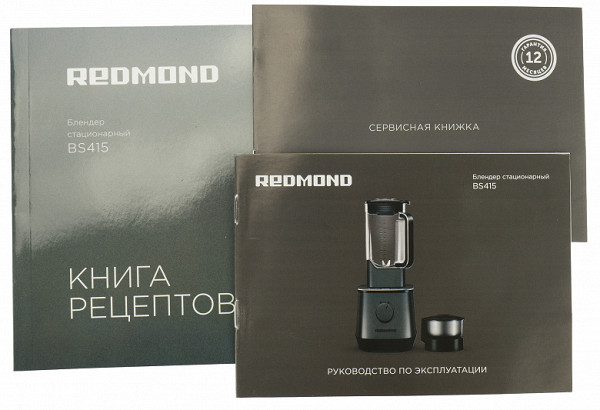
A nice addition to the documentation is a glossy publication with a wide range of recipes. Each recipe is provided with a detailed description of the process of preparing dishes and drinks, as well as bright, mouth-watering photographs. The first pages contain a table with information about the vitamin content and calorie content of various vegetables, fruits and berries.
Control
On the front side of the base there is a large round regulator that controls the functions of the blender. One turn to the left activates the self-cleaning mode, and one turn to the right activates the touch panel with four buttons and a display. Subsequent turns of the knob to the right change the speed from 1 to 5 with three intermediate levels.
On the touchpad from left to right:
- P — pulse mode, activated by holding the button.
- Basic mode, recommended for whipping cream, eggs and other products. The blender automatically adjusts the speed three times in 1 minute intervals.
- Ice crushing mode, works in pulses for 20 seconds.
- Coffee grinder mode for grinding coffee beans and nuts lasts 30 seconds.
- Soup mode, processing products at maximum speed for 8 minutes with automatic shutdown.
Exploitation
Before we started using the blender, we thoroughly washed the jug, lids and pusher, and wiped the motor unit with a soft, damp cloth. Then we placed the dried jug on the base and connected the device to the outlet.
The further procedure is simple: place the food in the jug and close the lid. If we do not use a pusher or do not plan to add ingredients, we close the hole with a measuring cap. We select the operating mode or speed and monitor the grinding process.
The results were always excellent, operation was simple, no failures occurred even with complex ingredients, and maintenance of the device was minimal. The recommended time of continuous operation under load is 2-3 minutes followed by a break of 10 minutes. However, the blender is capable of running continuously for up to 8 minutes in Soup mode, exceeding the recommended maximum capacity of up to 1.5 liters.
During use, the blender remains in place and only vibrates slightly at high speed. When grinding coffee beans, we noticed a slight smell of overheated rubber, which we associated with the energy consumption of this mode for the blender.
Care
The jug and lid should be washed immediately after each use by hand under warm running water. The base should be wiped with a damp cloth, avoiding immersion in water. Do not use a dishwasher to clean any part of the blender, or use abrasive or caustic products.
A self-cleaning function is provided to remove serious contaminants. To activate this function, you need to pour a liter of warm water into the jug, add a few drops of mild detergent and move the control to the far left position. The blender will run for one minute before turning off automatically. After this, the jug should be rinsed under running water and dried.
Our measurements
The maximum recorded power measured by a wattmeter reached 1610 W during ice crushing. For one minute of operation at the fifth speed, the device consumed 0.015 kWh.
We also ran a standard power test by filling a jug with 500ml of water and tracking the power levels the unit produced at each speed.
| Speed/mode | Power |
|---|---|
| 1 | 128 W |
| 2 | 170 W |
| 3 | 313 W |
| 4 | 537 W |
| 5 | 860 W |
| P | 216 W |
| Basic mode | 882 W |
| Ice crushing mode | 135 W |
| Coffee grinder mode | 896 W |
The noise emitted by the device when operating at 2nd speed is, according to our measurements, 68-70 dBA, at 5th speed — 80 dBA. When grinding coffee beans in a metal bowl, the device makes noise up to 83 dBA.
Practice tests
Chopping tomatoes (mandatory test)
For the first test, we took 550 g of Slivka tomatoes. Cut each one in half and remove the stems.
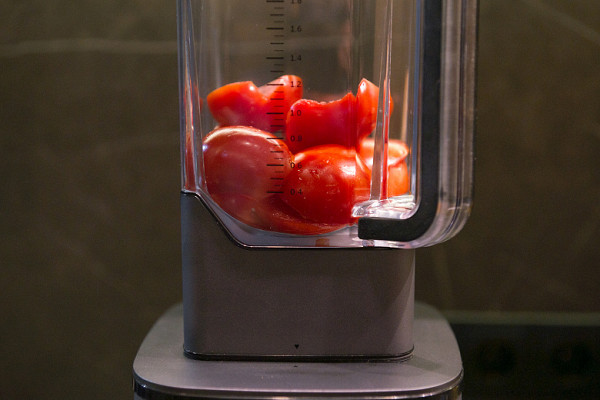
30 seconds at 5th speed — and we got a thoroughly crushed air mass with very small inclusions of ground skin and seeds.
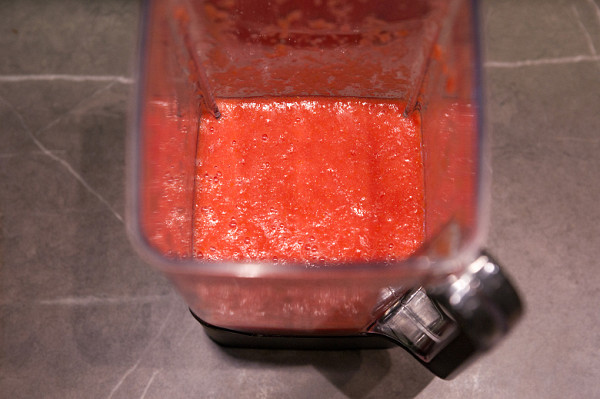
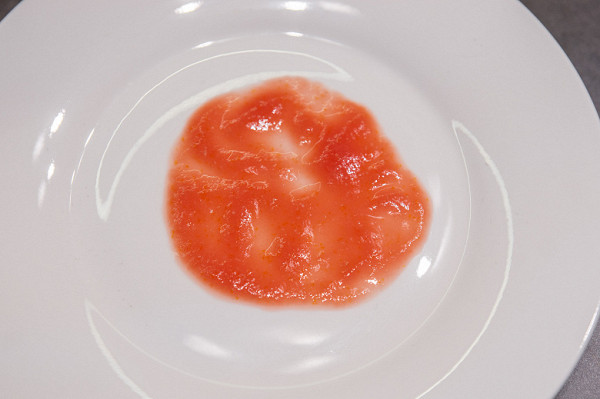
Perfect result.
Result: excellent
Milkshake with frozen strawberries
In this test, we examined the thoroughness of crushing heavily frozen strawberries into a thick mass of ice cream with a minimum amount of milk.
400 g of strawberries and 250 g of ice cream were placed in a bowl, 70 ml of milk was added and the dense mass was pulsed for the first minute. When the berries were sufficiently crushed, the main mode was turned on.
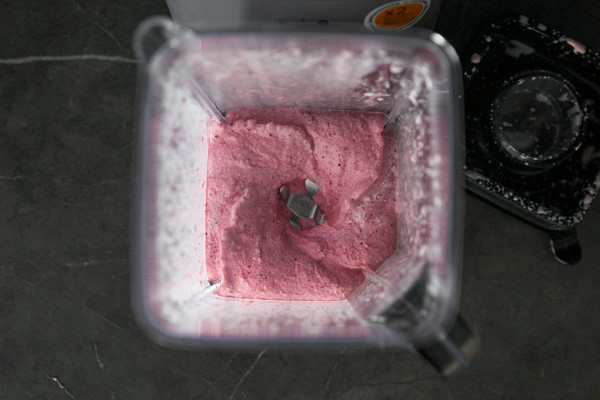
After two minutes the mixture looked smooth but too thick. So we added about 50 ml of milk and turned on the blender again in the same mode for 10 seconds. The result: not a single whole berry was left, and the cocktail itself was very well shaken.
Result: excellent
Champignon cream soup
Pre-cooked potatoes, fried and then stewed champignons in chicken broth were cooled a little and placed in a blender jug.

We added 450 ml of broth, seasoned with salt and spices. Then we turned on the Main mode for 20 seconds. After that, added 150 ml of cream and switched to speed 5. The blender worked at full power, the soup was actively mixed in the jug, and after 5 minutes the walls of the container became noticeably warm.
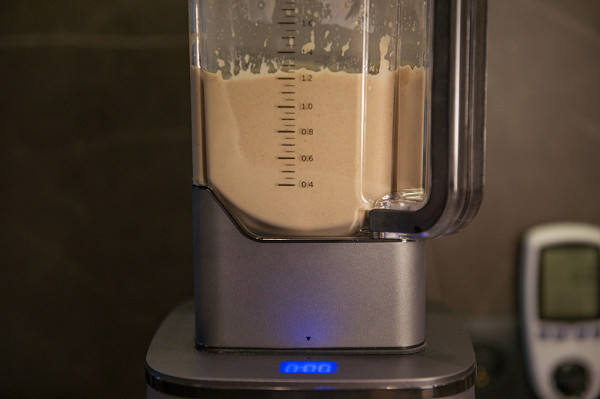
We stopped the device and measured the temperature of the soup. The thermometer showed 76 degrees. There was no point in continuing further — the dish was perfectly homogeneous, sufficiently whipped and hot.
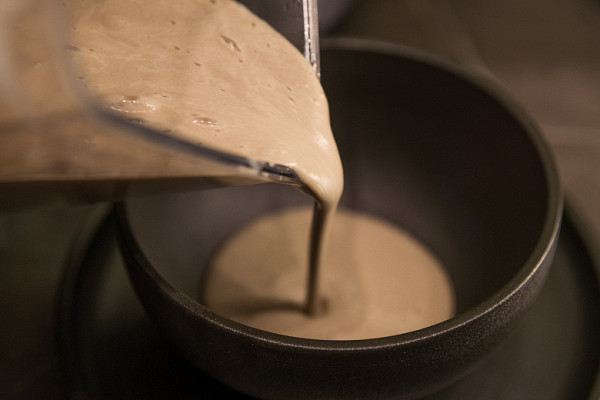
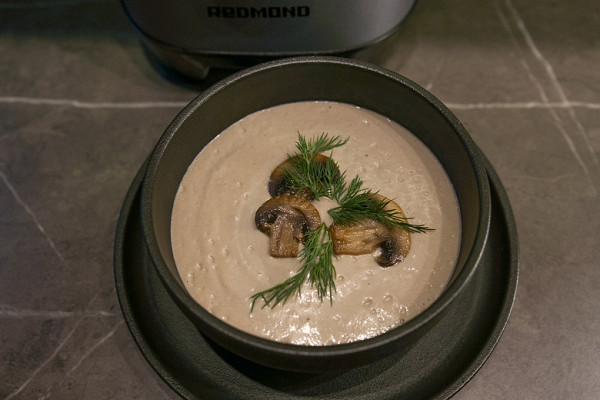
Result: excellent
Peanut paste
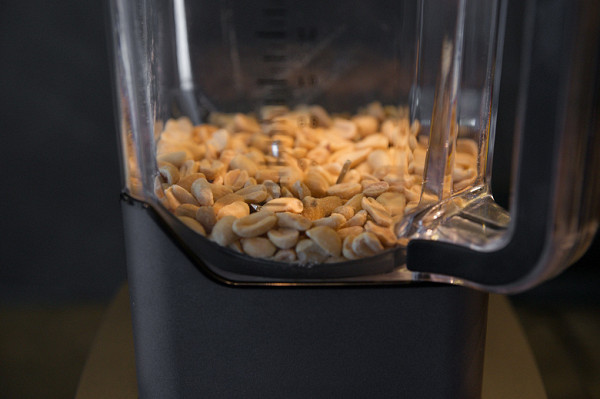
We added 600g of shelled and pre-roasted peanuts to the jug gradually, doing this in three stages. After each batch, pulse the blender for about one minute and then add the next batch.

When the entire mass crumbled, added salt and started the blender in manual speed mode, smoothly moving from the 1st to the 5th stage.
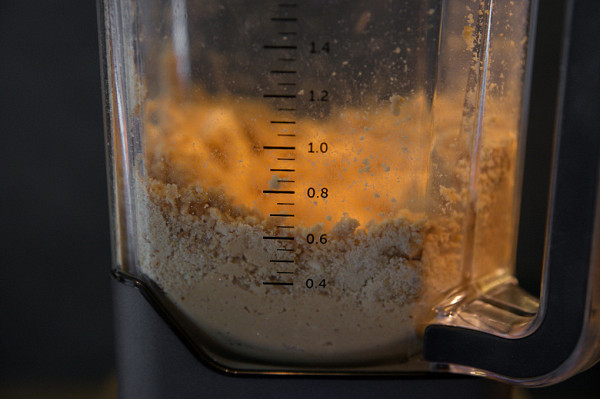
While working, I had to stop the blender a couple of times to pick up the jug and shake its contents. This was necessary, since the ingredients periodically accumulated along the edges, and in the center the knives were scrolled in vain. After 2.5 minutes we had a thick and tasty pasta without any whole pieces.

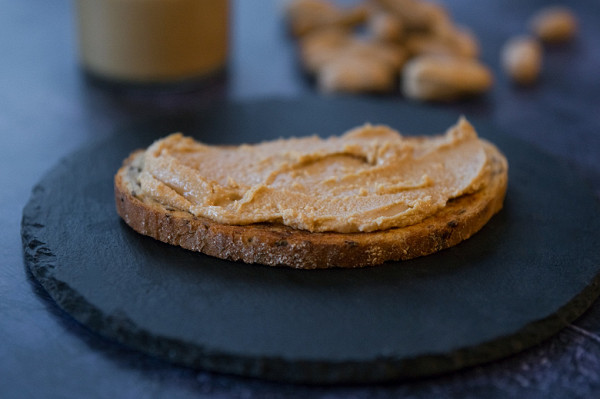
Result: excellent
Ice crushing
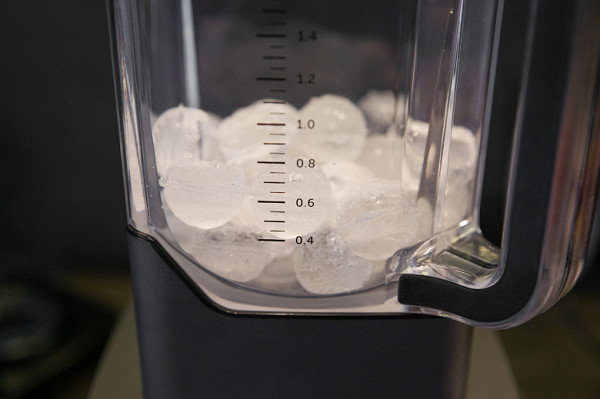
At the end of the first 20-second cycle of the special mode for crushing ice, there were still large pieces in the center of the bowl, so the procedure had to be repeated.

After the second cycle, the result was already much better, but to be sure, at the end we also broke through the snow mass with a couple of short-term impulse starts.

The consistency is excellent, but we have also encountered faster ice crushing.
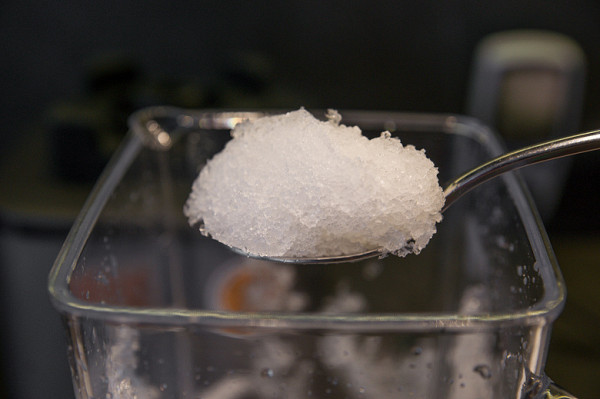
Result: good
Grinding coffee beans
Exactly 150 g of coffee beans fit into the grinder bowl to the brim.
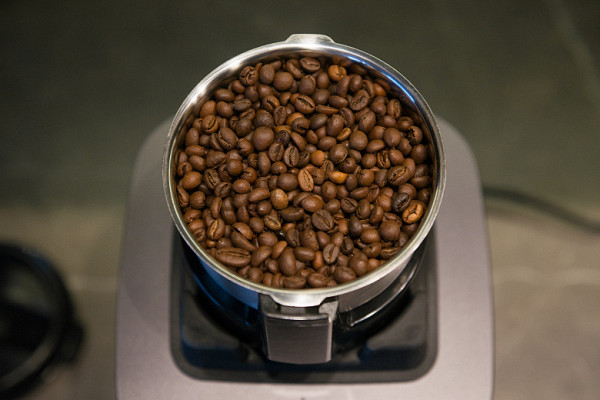
Close the container with a lid and turn on the automatic mode of the coffee grinder. By default, the mode works for 30 seconds, but after 20 we decided to stop the process and check what we got.

This time was enough for all the grains to grind evenly.
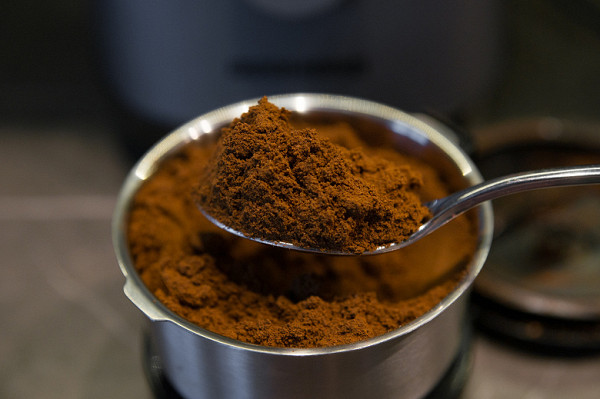
The walls of the bowl heated up to 35 degrees, and a slight smell of overheated rubber emanated from the blender itself. The smell no longer appeared on subsequent starts.
Result: excellent
conclusions
The Redmond BS415 stationary blender has successfully passed our tests, confirming its effectiveness. This device is equipped with smooth power control, pulse mode and automatic modes for crushing ice and grinding coffee beans. He also has a special metal coffee grinder-chopper in his arsenal.

The high speed of rotation of the knives when mixing food ensures quick preparation of hot cream soup after just 5 minutes of operation at maximum power. A mechanical speed controller and a touch panel with auto mode buttons provide convenient control. During operation, the display displays the second-by-second countdown in bright, large numbers. It is not recommended to wash the blender parts in the dishwasher, but the device is equipped with a self-cleaning function, which makes cleaning it easier.
Pros:
- stylish appearance and high-quality assembly
- high power, three auto modes and self-cleaning function
- heating cream soup to 75 degrees in 5 minutes
- two-liter jug and metal chopper bowl
Minuses:
- not found


